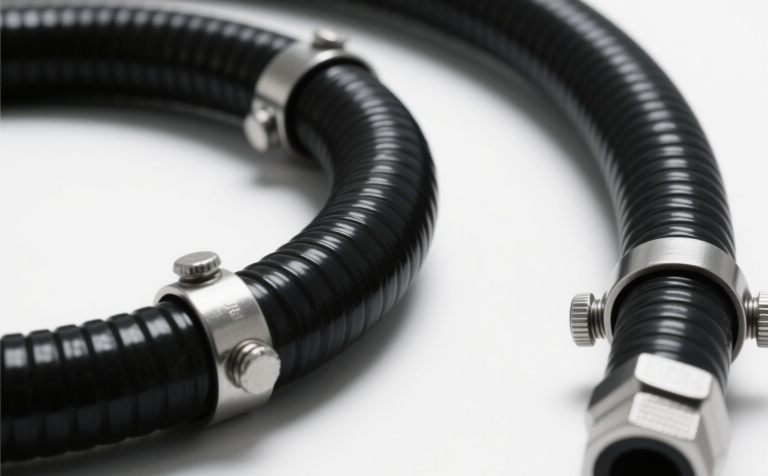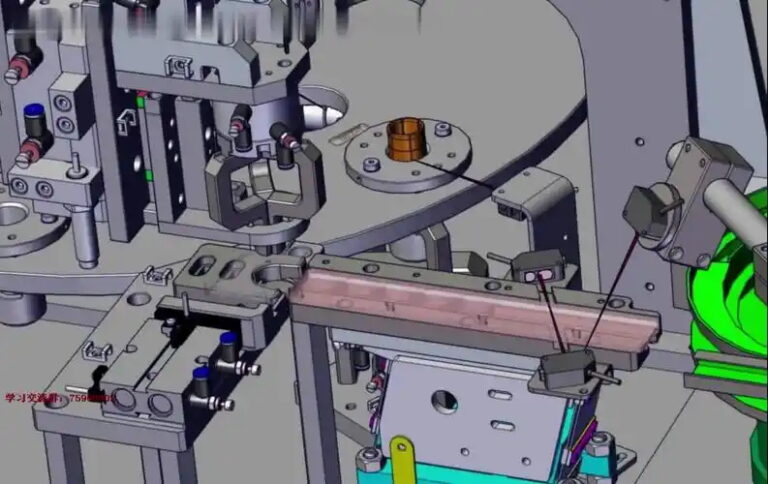Which is a common use for a hose clamp
In the vast realm of mechanical and household repairs, there exists a small yet indispensable component that often goes unnoticed…
In the vast realm of mechanical and household repairs, there exists a small yet indispensable component that often goes unnoticed but plays a crucial role in countless applications—the hose clamp. This seemingly simple device is a marvel of engineering, designed to secure hoses and tubes to various fittings, ensuring a tight seal and preventing leaks. Let’s explore the common uses of hose clamps across different domains, shedding light on their versatility and importance.
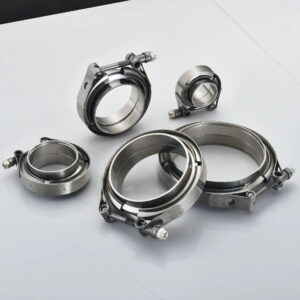
Automotive Applications
One of the most prevalent uses of hose clamps is in the automotive industry. Cars and trucks are a complex assembly of interconnected systems, many of which rely on hoses to transport fluids such as coolant, brake fluid, and fuel. For instance, in the cooling system, hoses carry coolant from the radiator to the engine and back. A hose clamp is used to attach these hoses to the radiator and engine fittings, maintaining a watertight seal. Without a properly functioning hose clamp, coolant could leak, leading to engine overheating and potential damage. Similarly, in the brake system, hoses transport brake fluid from the master cylinder to the brake calipers. A secure fit, ensured by a hose clamp, is critical for the effective operation of the brakes. In the fuel system, hoses carry fuel from the tank to the engine. Hose clamps prevent fuel leaks, which could not only hinder the vehicle’s performance but also pose a significant safety hazard due to the risk of fire.
Plumbing and Heating Systems
In residential and commercial plumbing, hose clamps are a go – to solution for a variety of tasks. When repairing a water supply line or connecting a new appliance such as a washing machine or dishwasher, hose clamps are used to secure the flexible hoses to the pipes or fittings. They provide a quick and reliable means of establishing a watertight connection, especially in situations where a permanent soldered joint is not feasible or necessary. In heating systems, hoses are used to transport hot water or steam. Hose clamps are employed to attach these hoses to radiators, boilers, and other components, ensuring that heat is efficiently distributed throughout the building without any loss due to leaks.
Marine and Boating
Boats and marine equipment present a unique set of challenges due to their exposure to water and the need for watertight seals. Hose clamps are extensively used in marine applications to secure hoses that carry water, fuel, and other fluids. For example, in the bilge pump system, hoses are used to pump out water that accumulates in the bilge. A hose clamp ensures that the hose remains securely attached to the pump and other fittings, preventing water from leaking back into the bilge. In the fuel system of boats, hoses transport fuel from the fuel tank to the engine. Given the potential danger of fuel leaks in a marine environment, hose clamps play a vital role in maintaining safety. Additionally, in the cooling systems of boat engines, hoses are used to circulate coolant. Hose clamps are crucial in preventing coolant leaks, which could lead to engine overheating and damage.
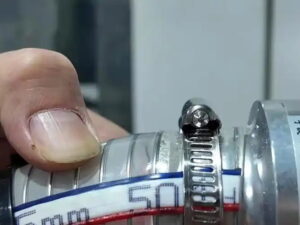
Industrial and Manufacturing Settings
In industrial plants and manufacturing facilities, hose clamps are used in a wide array of applications. They are employed to secure hoses in pneumatic systems, where compressed air is used to power tools and machinery. A secure connection is essential to ensure that the air pressure is maintained, allowing the equipment to function efficiently. In chemical processing plants, hoses are used to transport various chemicals. Hose clamps are used to attach these hoses to reactors, storage tanks, and other equipment, ensuring that the chemicals are safely contained and transported without leaks. In food processing facilities, hoses are used to transport ingredients and finished products. Hose clamps are used to secure these hoses to mixers, fillers, and other machinery, maintaining hygiene and preventing contamination.
Household Repairs and DIY Projects
For the average homeowner or DIY enthusiast, hose clamps are a handy tool to have in the toolbox. They can be used to repair a leaking garden hose by securing a patch or a new section of hose to the damaged area. In the case of a leaking faucet or showerhead, a hose clamp can be used to tighten the connection between the water supply line and the fixture, eliminating the leak. When setting up a home irrigation system, hose clamps are used to connect the various hoses and fittings, ensuring that water is efficiently distributed to the plants. In crafting and hobby projects, hose clamps can be used to secure flexible materials such as tubing or wire, providing a sturdy and adjustable means of attachment.
Types of Hose Clamps and Their Advantages
There are several types of hose clamps, each with its own advantages and suitable applications. The most common type is the worm – drive hose clamp, also known as the screw – band clamp. It features a threaded band and a screw that can be tightened to secure the hose. This type of clamp is easy to install and adjust, making it suitable for a wide range of applications. The spring – type hose clamp, on the other hand, is made of a single piece of spring steel that is bent into a circle. It provides a constant clamping force and is often used in applications where a quick and easy installation is required. The T – bolt hose clamp consists of a flat band with a T – shaped bolt that passes through it. This type of clamp is known for its strength and durability, making it suitable for heavy – duty applications such as those found in the automotive and industrial sectors.
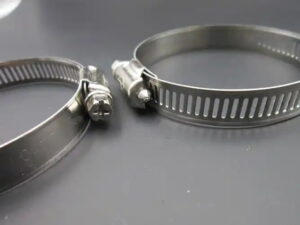
Proper Installation and Maintenance
To ensure the effectiveness and longevity of hose clamps, proper installation and maintenance are crucial. When installing a hose clamp, it is important to select the correct size to match the diameter of the hose and fitting. The clamp should be positioned evenly around the hose and fitting, with the tightening mechanism (such as the screw or bolt) accessible for adjustment. Over – tightening the clamp can damage the hose or fitting, while under – tightening can lead to leaks. It is also important to inspect hose clamps regularly for signs of wear, corrosion, or damage. If a clamp is found to be compromised, it should be replaced promptly to prevent leaks and potential damage to the system.
Conclusion
The hose clamp, though a small and humble component, is a workhorse in the world of repairs and maintenance. Its common uses span across automotive, plumbing, marine, industrial, and household applications, making it an essential tool for professionals and DIYers alike. By understanding the various types of hose clamps and their proper installation and maintenance, one can ensure the reliable operation of systems that rely on hoses and tubes. So, the next time you encounter a hose clamp, take a moment to appreciate its unsung role in keeping our vehicles, homes, and industries running smoothly.
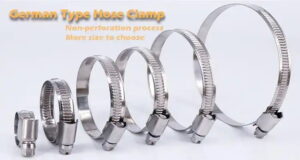
Common Problems and Solutions
Problem 1: Hose Clamp Slipping
After installation, the hose clamp may not hold firmly and slips along the hose or fitting. This can lead to leaks in fluid – carrying systems, such as in a car’s coolant or fuel lines.
Solution:
First, check the size of the hose clamp. It should be the correct diameter for the hose and fitting. If it’s too large, replace it with a smaller, more appropriately sized clamp.
Clean the surfaces of the hose and fitting where the clamp is applied. Any dirt, oil, or debris can reduce the friction and cause slipping. Use a suitable solvent and a clean rag to clean them thoroughly.
Ensure that the clamp is tightened evenly. Use a proper tool like a screwdriver or pliers (depending on the type of clamp) to turn the screw or lever, making sure the clamp grips the hose uniformly around its circumference.
Problem 2: Difficulty in Installation
Some hose clamps, especially those in tight spaces or on hard – to – reach areas, can be extremely difficult to install. For example, in a complex engine bay, getting a clamp onto a hose connection behind other components can be a challenge.
Solution:
Use specialized tools. For instance, a long – reach screwdriver or a right – angled pliers can help access tight spaces. There are also hose – clamp installation tools designed to make it easier to position and tighten clamps in awkward areas.
Consider using a pre – assembled hose – fitting – clamp unit if possible. This can reduce the need to install the clamp in a difficult location. You can assemble the components in a more accessible area and then install the entire unit.
If the space is too constricted, remove any obstructing components temporarily. This might involve taking off a cover or moving a less – essential part to gain better access to the hose connection for clamp installation. Just make sure to reinstall these components correctly afterward.
Problem 3: Hose Damage Caused by Clamp
Over – tightening the hose clamp can damage the hose, causing it to crack, split, or become deformed. This is a common issue when using overly aggressive clamping methods or when the clamp is too small for the hose.
Solution:
Always follow the manufacturer’s guidelines for the proper torque or tightness level when tightening the hose clamp. Use a torque – limiting tool if available, especially in critical applications like in a braking system’s hydraulic lines.
When choosing a hose clamp, select one that has a smooth inner surface. Some clamps with rough edges or sharp parts can damage the hose during installation or over time.
If you suspect the hose is already damaged due to over – tightening, replace the hose immediately. Additionally, check the clamp and adjust its size or installation method to prevent future damage.





